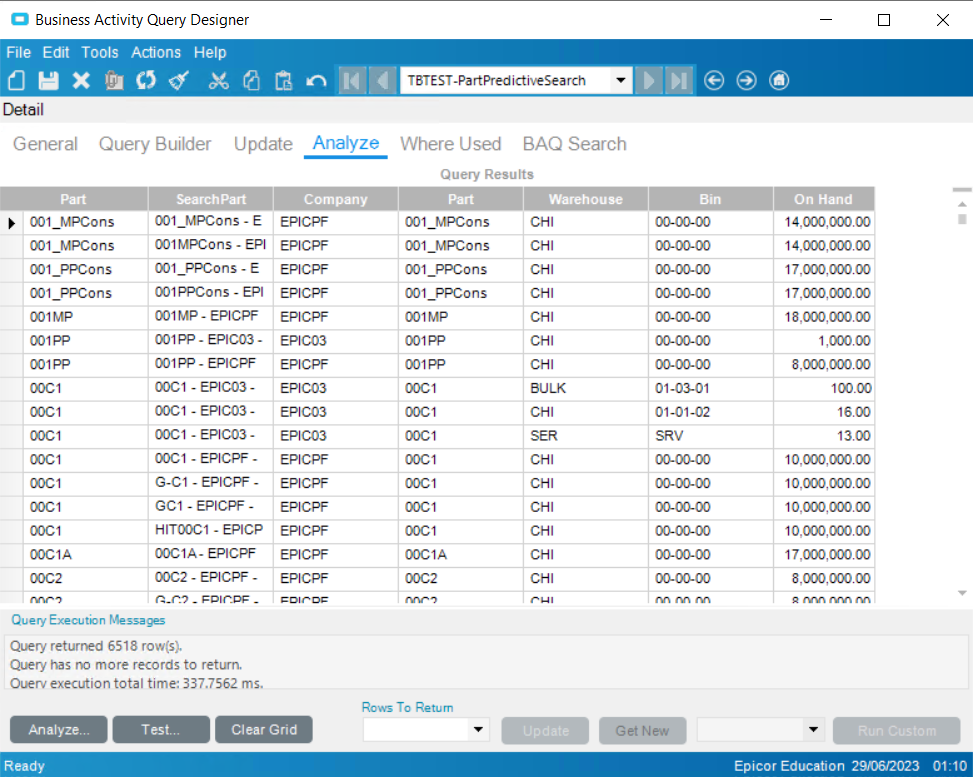Hi, Has anyone here developed a BAQ dashboard that shows On Hand Qty of all parts or even a searched part number across different companies with Epicor.
Our ERP setup has 3 companies, (USA, UK, Canada) our users want to be able to look at a dashbaord and filter or search for a part to see what the other 2 companies have on hand of that part.
This is for our aftermarket, if a customer needs a part and the USA team have 0 on hand the can easily look at this report to see if Canada or UK have the part on Hand.
Thanks in advance
Mal

